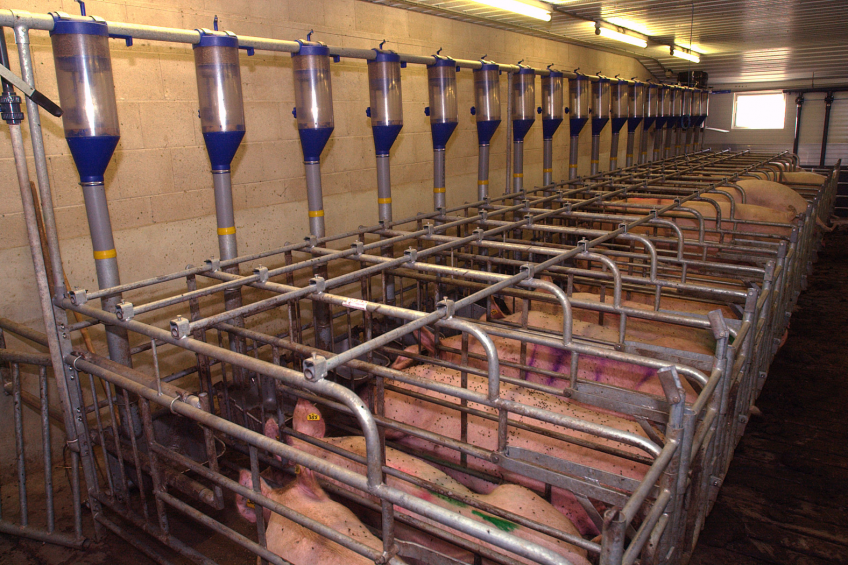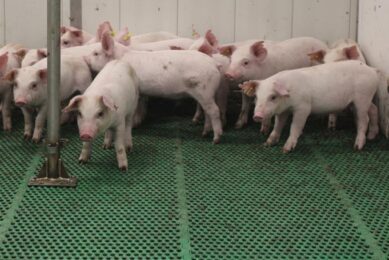Why oestrus synchronisation?

While the title of this article consists of a simple question, the answer can easily fill a two-page article. What again exactly happens at oestrus, what is synchronising and does it work at all breeding facilities?
By Miquel Collell, director scientific affairs, swine, MSD Animal Health, United States
Before proceeding with the question above this article, it is important to understand the concept of Fixed Time Insemination (FTI). As the name implies, FTI is a reproductive management system that uses products like buserelin acetate, (a synthetic GnRH analogue), to induce and synchronise ovulation, allowing insemination at a fixed time, with only a single dose of semen.
Swine production has gone through many changes during the past years. Today’s newly built farms in Northern America use a three-site production scheme. Concepts such as ‘all-in, all-out’ have been stressed and updated to extremes, as today, ‘all-in, all-out’ is not only implemented by pen, but also by barn, by building, or even complete farm site. ‘All-in all-out’ is therefore not an easy task considering that we work with biology (pigs), where variability consistently occurs. For example, if a barn-farm holds 300 pigs, then 300 pigs, no more, no less, are needed every time that we empty or fill this barn.
So, to meet this requirement, enough sows need to be bred on the same day. The importance of having animals of the same age in the same barn, plus the ‘all-in, all-out’ concept, reinforces the need of actively managing reproduction with special attention to the synchronisation of the batches and cycles.
Although we may think that this is the main reason to synchronise the herd, it is not the case. When calculating the economic benefit of single FTI, we can see that the benefits originate from three specific areas:
Reduction by two non-productive days (from 7.4 to 5.5); Reduction in labour (almost 10%); and Reduction in semen doses (from 2.5 to 1 dose of semen), allowing a return-on-investment (ROI) that can range between five and nine times the investment of applying the protocol.
How does it work?
The swine oestrus cycle varies between 18-24 days with an average duration of 21 days. This reproductive cycle, which is divided into two phases (luteal and follicular), is regulated by the hypothalamus located at the base of the brain. The hypothalamus secretes Gonadotropin Releasing Hormone (GnRH), which regulates the pituitary gland to secrete Follicle Stimulating Hormone (FSH) and Luteinising Hormone (LH) into the blood, which in turn, stimulates the production of the ovarian hormones, oestrogen (by the follicles) and progesterone (by the corpora lutea).
Luteal phase
Beginning immediately after ovulation, the corpora lutea (CL) produce progesterone, which is the key hormone to maintain pregnancy. If the animal does not conceive, prostaglandin causes the CL to regress and stop producing progesterone at about day 17 of the cycle.
Follicular phase
The drop in progesterone allows resumption of terminal follicular growth at the onset of the follicular phase. Four days later, when follicles have reached a large size and gained the ability to produce oestrogens, oestrus or heat is initiated. In addition, the increase in oestrogen concentrations triggers the ovulatory LH surge that induces ovulation about 40 hours after the onset of oestrus (around day 21 of the cycle).
Artificial insemination just before ovulation generates optimal fertility and prolificacy, therefore maximising productivity.
Obtaining the best fertility
Optimal fertility is achieved when the interval between insemination and ovulation is less than eight hours. Buserelin injection triggers ovulation 38 hours later. Hence, when insemination is done 30 to 33 hours after administering buserelin, the insemination to ovulation interval (at five to eight hours) is minimised. This has beneficial effects on reproductive performance such as:
- When the interval between insemination and ovulation is eight hours or less, the proportion of sows in which all oocytes are fertilised is greatest (at about 80%). In contrast, when this interval is longer (eight to 24 hours), this proportion falls to 65-70%.
- When the interval between insemination and ovulation is eight hours or less, the fertilisation rate is 96% as opposed to 83-89% for an interval ranging between eight and 24 hours.
Is it for any breeding farm?
Absolutely. It is common to think that this procedure only works in bigger farms, but as previously mentioned, single FTI is one way to reduce the cost of production by reducing NPD, use less semen, and labour. All of these are important for any size farm.
Batch management
Often, wrong assumptions are made about batch management. Usually, the concept is associated with two, three, four or five week batches.
What is forgotten is that a weekly system (with one, two or more weaning days) also requires batch management.
So, batch management is the most effective way to have a farm work at its highest potential and profitability. As explained, ovulation synchronisation is a reliable tool to have the sows and gilts inseminated at the same time (FTI) resulting in a proper batch management. So perhaps the title for this article should not have been ‘Why oestrus synchronisation?’, but instead ‘Why not oestrus synchronisation?’











